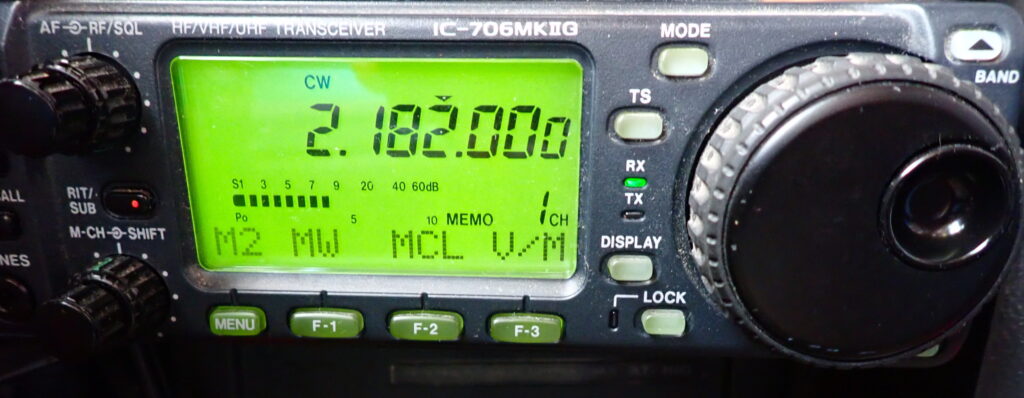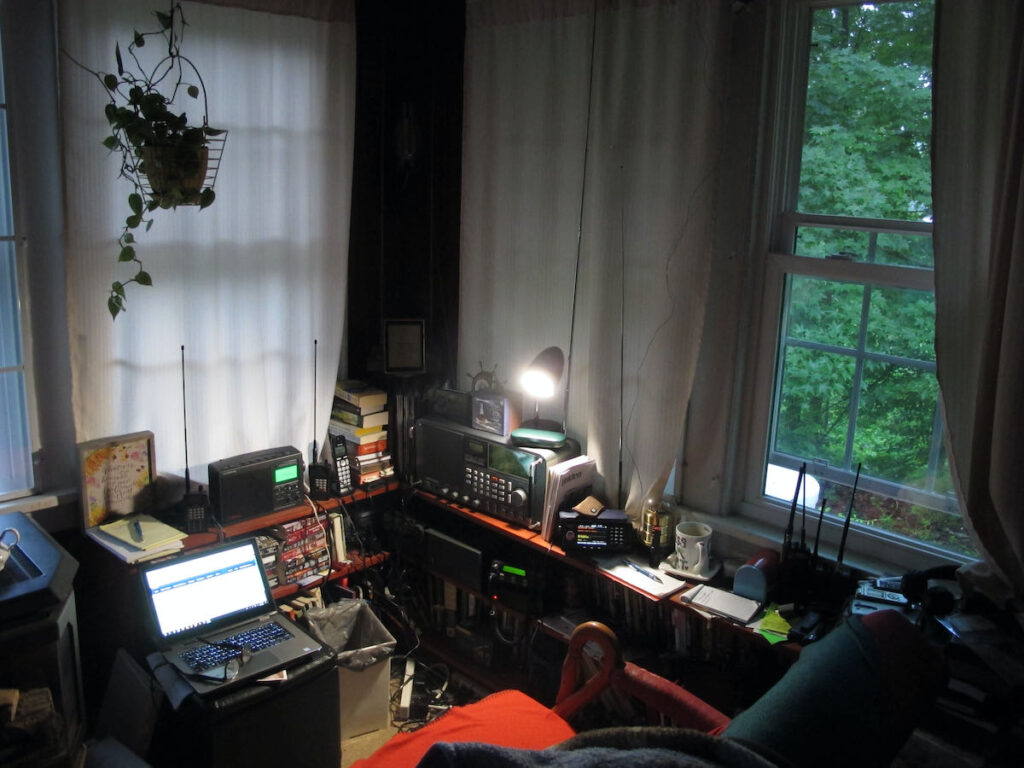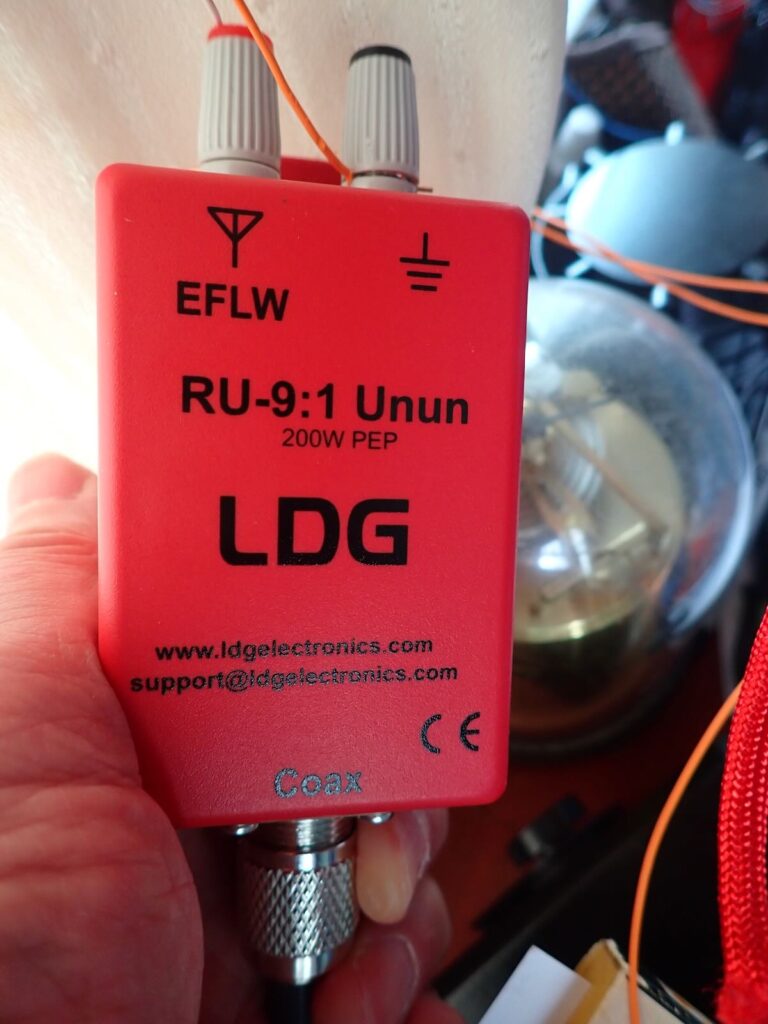It was Don Moore’s excellent article — An Introduction to DXing the MF Marine Bands — that inspired me. If you haven’t read it, do so now; it’s terrific. But be warned: my guess is that it will inspire you too.
Bottom line, ever since I read it, I have very much wanted to hear at least some of those MF marine stations that Don writes about. One of Don’s recommendations is “Hang Out on 2182 kHz.” So sometimes when I am messing around in the radio shack, I will park one of my shortwave receivers on 2182 USB in the hopes of hearing some marine communications. 2182 is the frequency that the US Coast Guard once monitored as a distress frequency, but no more.
According to Don: “Today 2182 kHz still gets some use as a calling frequency, where a ship and a shore station quickly arrange to have a conversation on another frequency. But the more common use now is for shore-based marine broadcasters to pre-announce marine information broadcasts they are about to transmit on other frequencies.”
Just the other day, I brought up 2182 on my Satellit 800, but the atmospheric noise was pretty bad. I fooled around with a couple of different indoor wire antenna configurations but wasn’t able to achieve any substantial improvement. But in the midst of that messing around, I “rediscovered” my Icom IC-706 MkIIG on a shelf. It receives from 30 kHz to 199 MHz and from 400 to 470 MHz, and I used mine for over a decade to run the Commuter Assistance Network on two meters. I still keep the 706 as a back-up in case my main rig for running the net goes down.
But I had never used the 706 extensively on HF (weird, I know, but that’s the truth). Nevertheless, a little voice in the back of my head (probably one of the brain dudes) kept saying “Why don’t you give the 706 a try as an HF receiver?”
So I did. I hooked up the 706 up to my horizontal room loop through some coax and an LDG 9:1 unun (the same antenna setup I had been using on the Satellit 800). And – shazam – the 706 is substantially quieter on 2182 with that antenna than the Satellit 800.
That’s good, I thought, but what if the 706 appears to be quieter because it is less sensitive? So I did some comparative tests with the 706 and the Satellit 800 on the 80 and 40 meter ham bands and satisfied myself that the 706 is both quieter and more sensitive than the Satellit 800. I could just plain hear the signals better (and more pleasantly) with the 706.
The only substantial weirdness with the Icom 706 MkIIG is that, as a small unit, it has relatively few buttons on its face. As a result, it has no keypad for direct frequency access. There are buttons for jumping from one ham band to another and another button for changing tuning steps, so with judicious use of those buttons and the tuning knob, it’s fairly easy to get from one frequency to another, but it is not as fast as direct entry.
And, of course, the 706 does not have all the cool seek-and-store functions and the like that are available on today’s really slick shortwave portables.
Here’s the upshot: if you’ve been on the hunt for a better HF receiver with single sideband capabilities, an old dog, like an old ham transceiver, might be just what you need. And if you are already enjoying an old ham transceiver as a shortwave receiver, I’d like to hear about it.
So, have I heard any of those cool MW maritime stations? Not yet, but I’m sure I’ll have fun trying!




Thanks for the writeup!
I have used Ham Transceivers for years (Decades)
One of the first was a Kenwood TS850 (I wish I had kept it!)
Another great one I should have kept was the Icom 746 they have an Am Sync Detector!
Right Now I have an Icom IC-7100 it does a good job also
W. Charles,
Yep, ham transceivers work pretty well as receivers.
I, too, once had a TS850 . . . a lot of serious receive controls on that rig, if I recall correctly.
Cheers, Jock
Been a SWL listener for 35 years now. Did get my Tech. License 2019. Bought a ICOM 7300 with the thought of getting my General, but I’ve had so much fun using the 7300 as a SW receiver the General’s License has been put on hold. My antenna is a Compactenna HamR-7 in the attic. There’s nothing like pulling in those signals from around the world. Thanks Jock! Dave KC1LPS
Dave,
Sounds like you’re having a great time!
Thanks for the kind words.
Cheers, Jock
I’m in love with my old Icom IC-706mk2g. Of course, old transceivers need maintenance and adjustment, but they receive much better than new plastic soap dishes.
US7IGN,
I sure like mine!
Thanks for your comments.
Cheers, Jock
Fun fact – I have dozens, probably hundreds, of hours of *receiving* on my IC-705 (no relation to the 706 other than manufacturer). I have, *maybe* 10 minutes of time on the transmitter. Actually, I just found out about an HF D-STAR net and plan to actually key the mic again today if I can hear those guys. 🙂
But my point is that amateur HF (or HF+ in the case of the 705 and 706) have *fantastic* receivers in them. If one is on your shelf providing a home for wayward dust, hook it to power and an antenna and get tuning – or do as suggested and park it on 2182 (or 11175 or 10000 or whatever).
Thanks, Peter, for your comments!
Cheers, Jock
Thanks for the info. Keep the faith young man, as the weather cools, the 2 MHz band will get better in winter.
The “Marine Bands” in the old days used AM and I can remember listening to phone calls from ship-to-shore via the New York Marine operators in the 2 MHz band. We’re talkin’ 1960’s. These days you can hear Canadian maritime weather reports on 2.750 SSB in English and French. Also, on the other marine bands you’ll hear ops using SSB in different languages such as Portuguese and Spanish. I use an Airspy HF+ Discovery and a 31′ ham vertical for checking the maritime bands. I’ll put 2182 kc’s thanks to you and will see what comes up.
Mario,
Thanks for the tip on the Canadian maritime weather reports. Be sure to read Don’s article that I mentioned; it’s terrific.
If you don’t mind saying, what vertical are you using and what’s your location?
Cheers, Jock
Jock,
I use a ground mounted Alpha S9V31 vertical with lots of radials.
Mario
Jock… dis you already try “that T antenna” we discussed about on the swling.net forum ?
Andrew,
Not yet. It’s on the list. I’ll post a photo on the forum that shows a problem I need to solve first.
Cheers, Jock